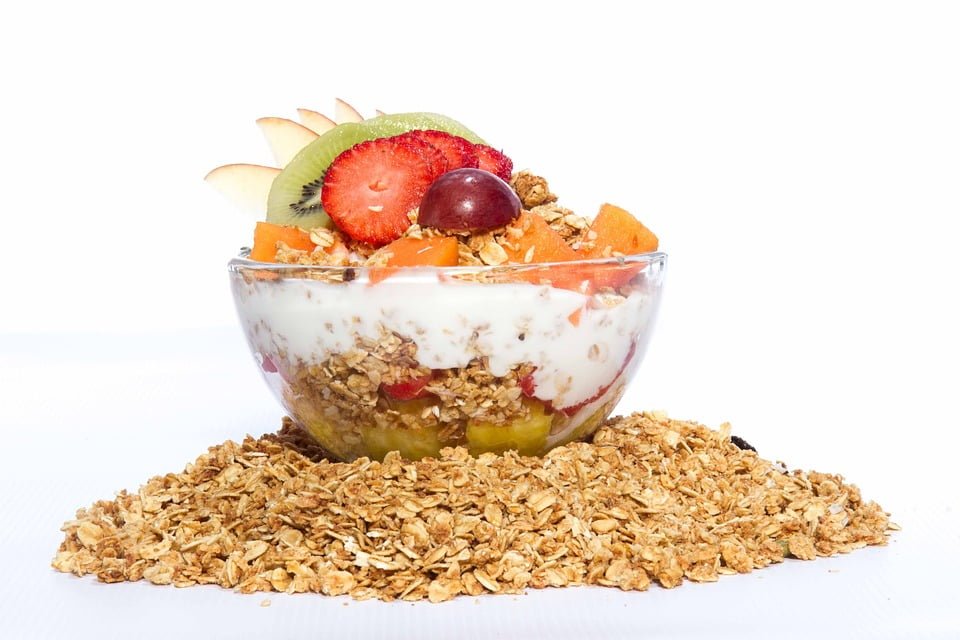Brittle Diabetes is a term generally used to represent a subset of patients with Type 1 Diabetes who have rapidly fluctuating and erratic blood sugar levels.
A brittle Diabetic Diet, discussed here, has a significant role in keeping the blood sugars steady.
It is not uncommon to see blood sugar going up and down rapidly in certain type 2 diabetic patients as well. These subsets of type 2 diabetic patients tend to be elderly, have insulin deficiency, and are lean.
The term “Brittle” means very delicate or sensitive. Patients with brittle diabetes are very sensitive to slight changes in insulin and diet, especially carbohydrates.
A special dietary menu is required to prevent the rapid fluctuations in blood sugars in these patients.
Brittle Diabetic Diet

Complex Carbohydrates:
Complex carbohydrates are in their whole food form and include additional nutrients such as fiber, vitamins, and smaller amounts of proteins and fats.
Brown Rice:
It is good to have a moderate quantity of brown rice in your diet while having brittle diabetes because it contains fiber, along with vitamins and antioxidants, which help to maintain sugar levels.
Research has analyzed and concluded the positive impacts of brown rice on lowering blood sugar in diabetic subjects. The impact is owed to the polyphenols, phytic acids, and dietary fiber in brown rice. [Ref]
Whole Wheat:
The focus here is to choose unrefined wheat over refined ones since the latter has little to no dietary fiber in it, which is required for maintaining blood glucose here.
Without causing any change in your total carbohydrate intake, just replace the refined ones with whole ones. [Ref]
Quinoa:
It is regarded as a superfood by many nutritionists, Quinoa is a seed that is packed with all the good stuff. This includes vitamins like B6, antioxidants, plant protein, and dietary fiber. [Ref]
With a glycemic index of 53, this natural product is more than beneficial for diabetics. It leaves a person satiated due to its high fiber content.
Oatmeal:
Oatmeal has a low glycemic index, making it promising for diabetic patients to maintain their body weight and sugar levels.
Its fiber content also makes it special as fiber has a significant role in controlling blood sugar levels.
Fruits and vegetables:
Particularly low glycemic fruits have a positive impact on blood glucose levels, as daily consumption of 200 g of fruits can prevent type 2 diabetes. [Ref]
An enhanced intake of cruciferous veggies, yellow vegetables, and dark leafy greens can lower blood sugar levels. [Ref]
Importance of Timing Your Meals
Apart from this, the timing of a meal is very important for such patients because the doses of insulin must be matched.
This is because these patients use insulin doses that constantly decrease the sugar level in their bodies so that they have to take a meal after this.
Otherwise, they will become hypoglycemic, which is far more dangerous than the hyperglycemic state.
If such patients take a diet without insulin doses, they will become hyperglycemic, and in such instances, they have to take insulin doses to match the glucose level.
Brittle Diabetic Diet: Role of Fats:
Fats do play a critical role in the human body, so complete avoidance is totally unnecessary and unhealthy.
However, fats are loaded with calorie,s which shows why one must consume them in small quantities. [Ref]
Not all sorts of fats are bad for diabetics, some healthy ones are listed below.
- Oily fish
- Canola oil
- Chia seeds
- Walnuts
Brittle Diabetic Diet: Proteins
Another important part of your diet is the protein portion. Protein comes from two different sources, which are classified as plant sources and animal sources.
Although both are healthy, plant protein still has more benefits and no downsides. Animal proteins come from lean meat and red meat, the former being healthier.
A higher protein intake has a positive impact on postprandial glucose levels. [Ref]
Beans and lentils
Beans and lentils should be the principal food for diabetic patients because they have a low glycemic index, making them less dangerous as they do not cause significant changes in blood glucose levels.
Brittle Diabetic Diet: What Foods to Avoid
Simple Carbohydrates:
During the refining process, the bran and germ are expelled along with all the supplements present in the whole grains.
A high intake of refined carbs is connected with insulin resistance and elevated blood sugar levels. These are a few of the most common indications of diabetes.
They can escalate the risks for diabetes, heart illness, and high cholesterol. Because they are deficient in fiber and processed rapidly, eating refined carbs can cause prominent swings in blood sugar levels.
Here are a few examples of refined or simple carbs that you might want to look out for.
Table Sugar:
- Also known as sucrose, it instantly raises the glucose level as it is comprised of glucose and fructose.
Pasta:
- Pasta that is cooked freshly can raise the level of blood glucose tremendously so it should be avoided. However, you can take whole-grain pasta because it contains more dietary fiber.
Flour:
- It contains simple carbohydrates in it which cause the blood glucose level to rise higher than normal.
Cookies:
- Sugary food contains sucrose, which can become lethal if taken in large quantities, so it should be avoided to maintain your normal sugar level.
Sweetened beverages:
- It has carbohydrates in liquid form, which can be digested faster than solid ones so they should not be included in the diet of the diabetic patient.
Sauces:
- Like ketchup, other sauces should be restricted in the diet because they contain sugar.
Basic Info about Brittle Diabetes:
Brittle diabetes is basically a type 1-associated diabetes, defined as unstable diabetes. It is somehow tough to get the glucose level to a normal state in case of brittle diabetes.
It is also known as ‘labile diabetes’, which indicates that glucose levels can move up and down frequently and easily.
In this disorder, a patient is suffering from hypoglycemia in one second and hyperglycemia in another second.
Causes:
- Sprue or celiac disease that affects the intestine
- Anxiety, stress, and depression aggravate this disorder by making the cells insulin resistant.
Symptoms:
- Dizziness, weakness, or shaking.
- Fast heart rate.
- Irritability or confusion.
- Pale skin.
- Restless sleep.
- Sudden hunger.
- Blurry vision.
- Fatigue
- FEEL WHAT LIGHTER FEELS LIKE. Metamucil traps and removes the waste that weighs you down* so you feel lighter and more e…
- MADE WITH PSYLLIUM HUSK FIBER. Metamucil Sugar-Free 4-in-1 fiber powder is made with naturally sourced psyllium fiber th…
- SUGAR-FREE BLEND: This fiber supplement contains no added sugar (not a low calorie food)
- One package of 28 unflavored powder stick packs of Benefiber On the Go Prebiotic Fiber Supplement Powder for Digestive H…
- Daily fiber powder supplement that nourishes the growth of good bacteria that exist naturally in your gut to help you ma…
- Prebiotic fiber powder that contains no sugar, gluten or artificial flavors
- 97% Pure Berberine Powder – High-purity, plant-derived extract with a rich yellow color. Carefully processed and lab-tes…
- Naturally Bitter Taste – Berberine has a strong, naturally bitter flavor. Best enjoyed when mixed with smoothies, tea, c…
- 100g in Resealable Foil Pouch – Packaged in a premium aluminum pouch to protect from moisture and light, keeping the pow…

- 5 Delicious Flavors: Freeze-Dried Mango, Freeze-Dried Blueberry, Freeze-Dried Orange, Freeze-Dried Dragon Fruit & Freeze…
- Pure and Natural Ingredients: Our fruit powders are made without synthetic pesticides, GMOs, or harmful chemicals. Each …
- Health Benefits: Our carefully selected fruits are packed with antioxidants, vitamins, fiber, and digestive enzymes to s…








